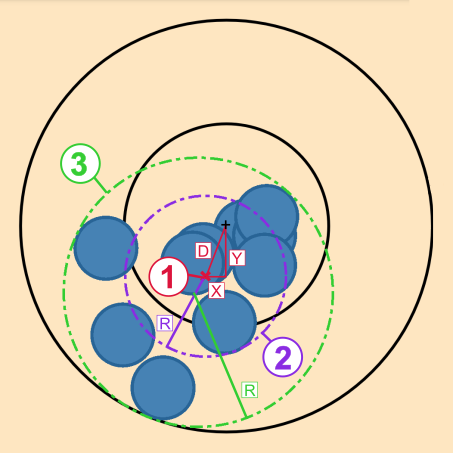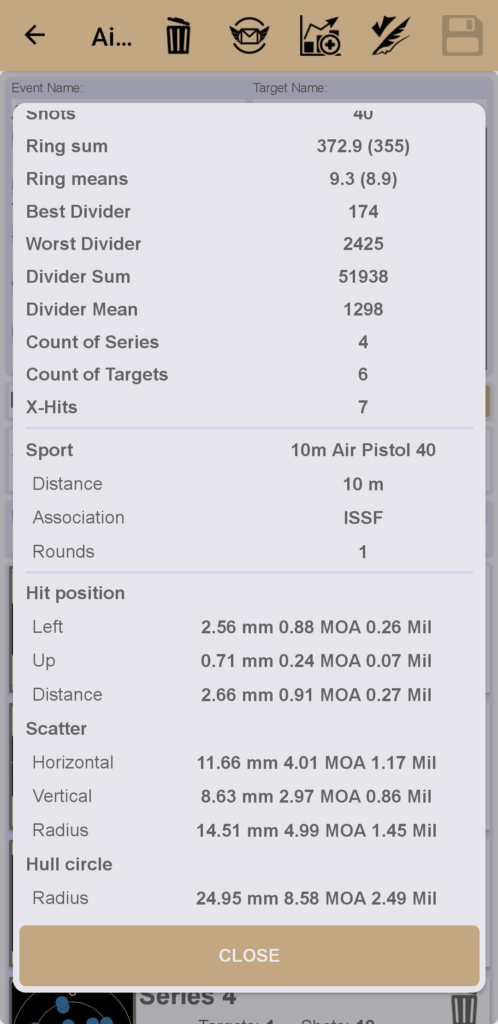
Shot group analysis
For the analysis of the shot group in terms of accuracy, precision and size, various key performance indicators are available both graphically and numerically. These are explained in more detail in the following section.

- Mean hit position
The average hit position corresponds to the center of the shot group (accuracy). Numerical specifications X and Y stand for the horizontal and vertical deviation from the center of the target, respectively. The mean deviation D is the distance between the mean hit position and the center of the target. - Scattering circle
The scatter circle is based on the standard deviation. It includes slightly more than 2/3 of all hits. The radius R of the scattering circle corresponds to the average deviation (precision) of the shots with respect to the center of the shot group. The scatter circle is the statistically more meaningful measure compared to the hull circle, since individual outliers are not weighted so heavily. The additional numerical data X and Y correspond to the scatter values in horizontal and vertical direction. - Hull circle
The hull circle is the minimum circle that includes all hits. The radius R respectively the diameter of the hull circle serves as a measure for determining the size of a shot group.

In the shooting book, you can call up an advanced display for each event with a tap on the short overview. All relevant key performance indicators of the event are summarized here.
For the characteristic values hit position, scatter and hull circle the angles are indicated in addition to the data in mm. For this, a sport must be set, since the shot distance is required as a parameter for calculating the angles.
The angles are given in angular minutes (MOA) and milliradians (Mil). The number of clicks of sight adjustments are often given in these units, so you can use them to figure out the number of clicks needed to adjust for optimum hit position.
MOA is more commonly used in the imperial system and is roughly equivalent to 1 inch at 100 yards.
Mil is used in the metric system and corresponds to about 10 cm at 100 m.
